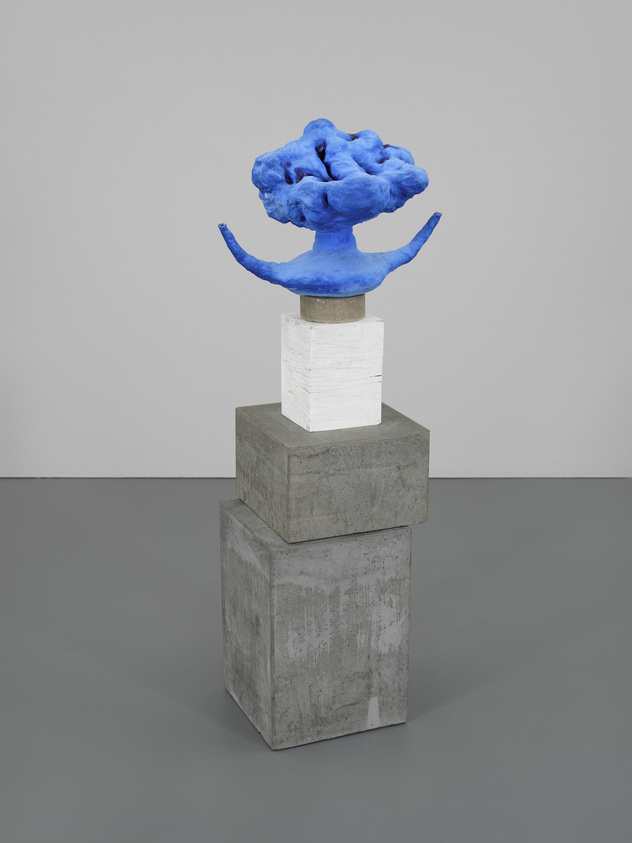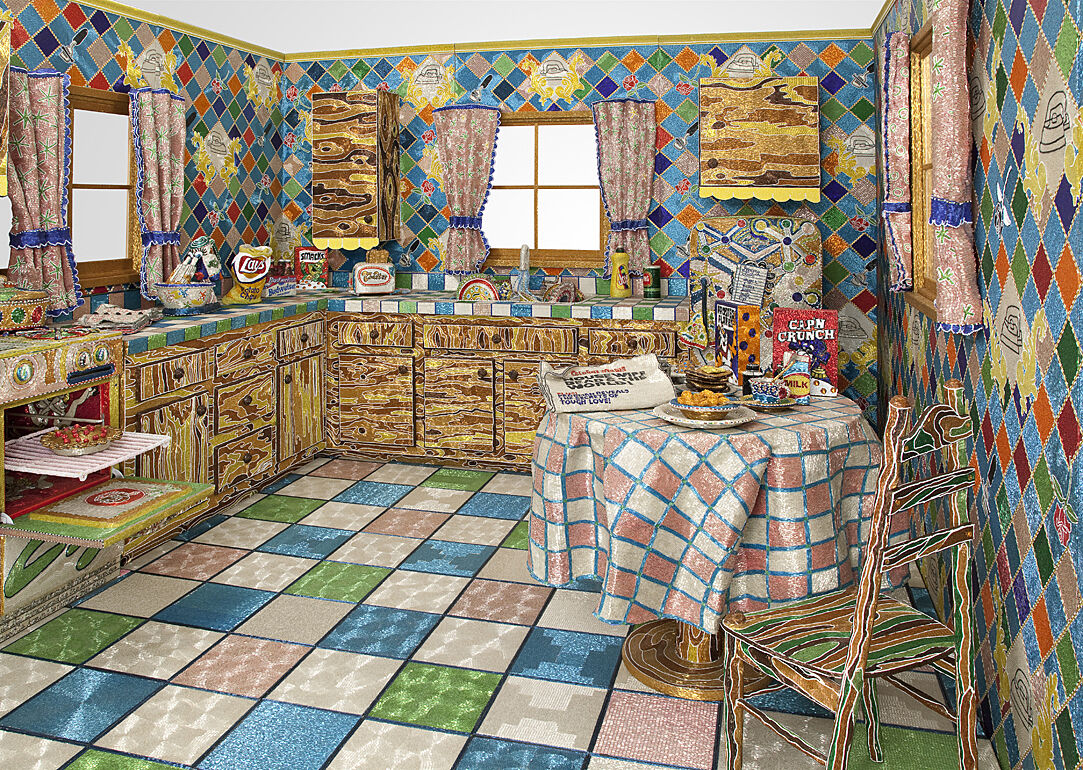Not on view
Date
2011
Classification
Sculpture
Medium
Glazed ceramic, painted hardwood, and cast concrete
Dimensions
Overall: 56 1/4 × 22 1/16 × 14 1/4in. (142.9 × 56 × 36.2 cm)
Accession number
P.2020.17a-e
Credit line
Whitney Museum of American Art, New York; Promised gift of Adam Sheffer in memory of Bradley Carmel
Rights and reproductions
© Arlene Shechet and the LeRoy Neiman Center for Print Studies, Columbia University
Audio
-
Arlene Shechet, A Night Out, 2011, and Y Wabi Sabi N, 2007
In Making Knowing: Craft in Art, 1950–2019 (Spanish)
0:00
Arlene Shechet, A Night Out, 2011, and Y Wabi Sabi N, 2007
0:00
Arlene Shechet: Me llamo Arlene Shechet, y soy escultora.
Narrador: Hay dos obras de Shechet en esta exposición hechas en cerámica. Se llaman A Night Out y Y Wabi N.
Arlene Shechet: Lo maravilloso de la cerámica vidriada es que cualquier cosa que coloque en la superficie y haga fundir con fuego se vuelve completamente parte de la estructura de la obra. Es algo especial que tiene este material: fundir algo para que la forma y la superficie sean literalmente una misma cosa.
Una de las cosas que tiene la arcilla es que necesita estar hueca para poder cocerla. Su oquedad me resulta extremadamente atractiva, porque se siente como un vacío alrededor de un aliento, o un vacío que contiene el aliento. A veces, al hacer las primeras piezas, hasta las veía como si fuesen inhalaciones o exhalaciones. Fue en la época en que mi padre tenía insuficiencia cardíaca congestiva. Pasaba días con él, y luego volvía y trabajaba en estas piezas, y tomaba una consciencia dolorosa o sublime, o dolorosa y sublime, de mi capacidad para respirar, y eso era lo que sucedía con los materiales cuando los inflaba o desinflaba como si les diera aliento.
Narrador: A Night Out es una figura azul ubicada encima de dos bloques, uno de los cuales está desalineado respecto del otro.
Arlene Shechet: Siempre pienso, sea la obra que sea, ¿dónde se apoya? ¿Cómo vive en el mundo? La precariedad del ensamble que genero para que esa pieza se pose está muy relacionada con mi propia experiencia de la precariedad de la vida y la muerte, y nuestra posición básica en el mundo del desconocimiento, y de intentar sentir estabilidad en una vida inherentemente inestable.
-
0:00
Arlene Shechet, A Night Out, 2011, and Y Wabi N, 2007
0:00
Arlene Shechet: My name is Arlene Shechet, and I'm a sculptor.
Narrator: Shechet has two works in this display of works made in ceramics. They’re called A Night Out and Y Wabi N.
Arlene Shechet: The beauty of ceramics was that whatever I put on the surface and I fired became completely part of the structure of the piece. That's so unique to that material, to fire something in, so that the form and the surface are literally one thing.
One of the things that clay presented to me was that it needed to be hollow in order to be fired. Its hollowness was extremely attractive to me because it felt like it was a void around a breath, or a void that contained the breath. Sometimes when I was making those early pieces, I was even thinking about them being inhales or exhales. It was at a time when my father had congestive heart failure. I would spend days with him, and then come and work on these pieces, where I was painfully and sublimely aware of my ability to breathe, and what was happening with the materials as I thought of them being puffed up or deflated through breath.
Narrator: A Night Out is a blue form, placed on top of two block forms, one of which sits off-center on top of the other.
Arlene Shechet: I had always been thinking about, whatever I make, what does it sit on? How does it live in the world? The precariousness of the assemblage that I put together for that piece to sit atop is very related to me experiencing the precariousness of life and death, and our basic position in the world of not knowing, and trying to feel stability in an inherently unstable life.
Installation photography
-
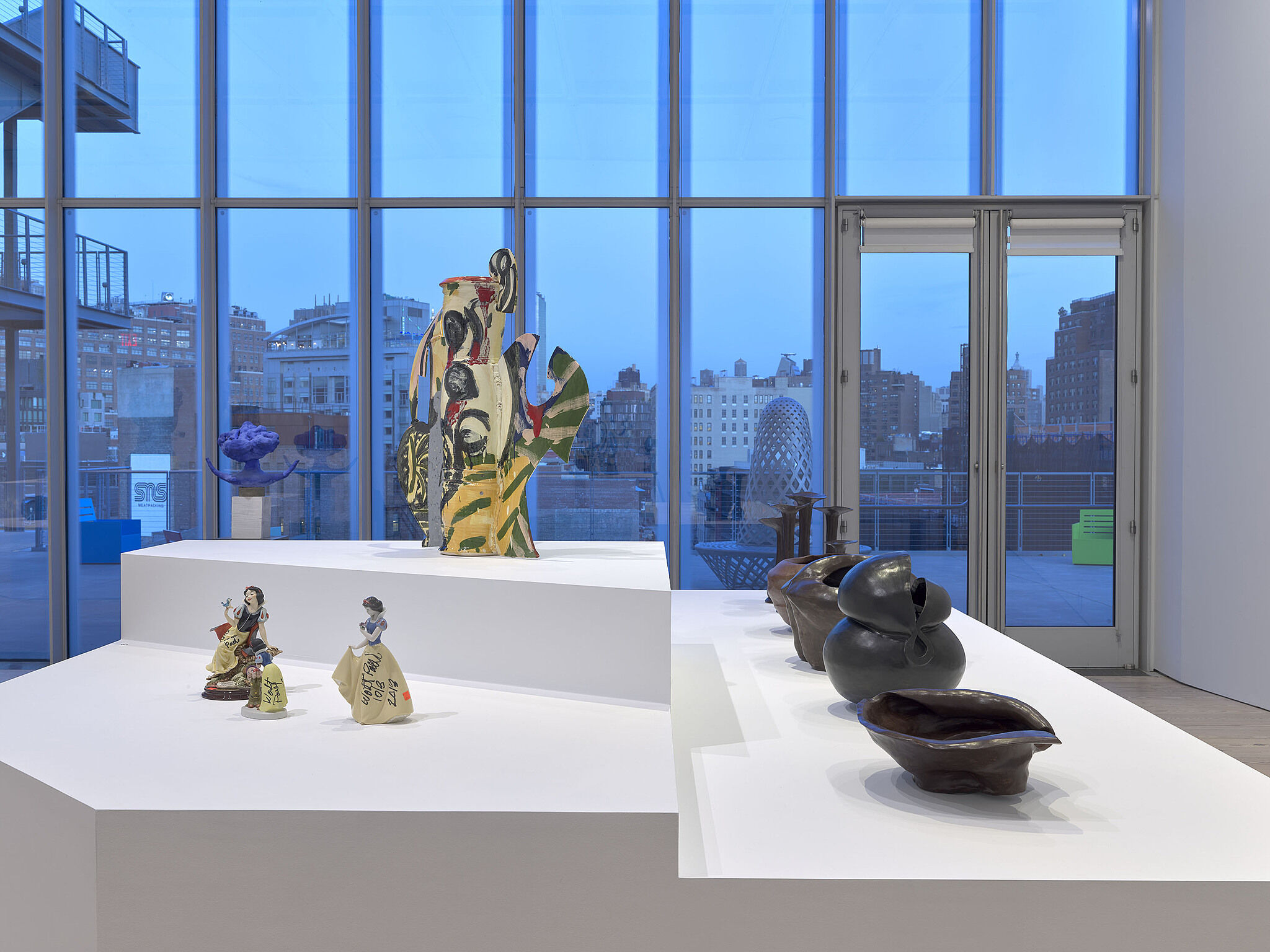

Installation view of Making Knowing: Craft in Art, 1950–2019 (Whitney Museum of American Art, New York, November 22, 2019–January 2021). From left to right: Arlene Shechet, A Night Out, 2011; Paul McCarthy, Walt Paul Store, WS, Snow White, 2013; Paul McCarthy, Walt Paul Store, WS, Snow White and Dopey, 2013; Paul McCarthy, Walt Paul Store, WS, Snow White, 2013; Betty Woodman, Still Life Vase #11, 1990; Katy Schimert, The Five Senses, 1997. Photograph by Ron Amstutz
From the exhibition Making Knowing: Craft in Art, 1950–2019
-
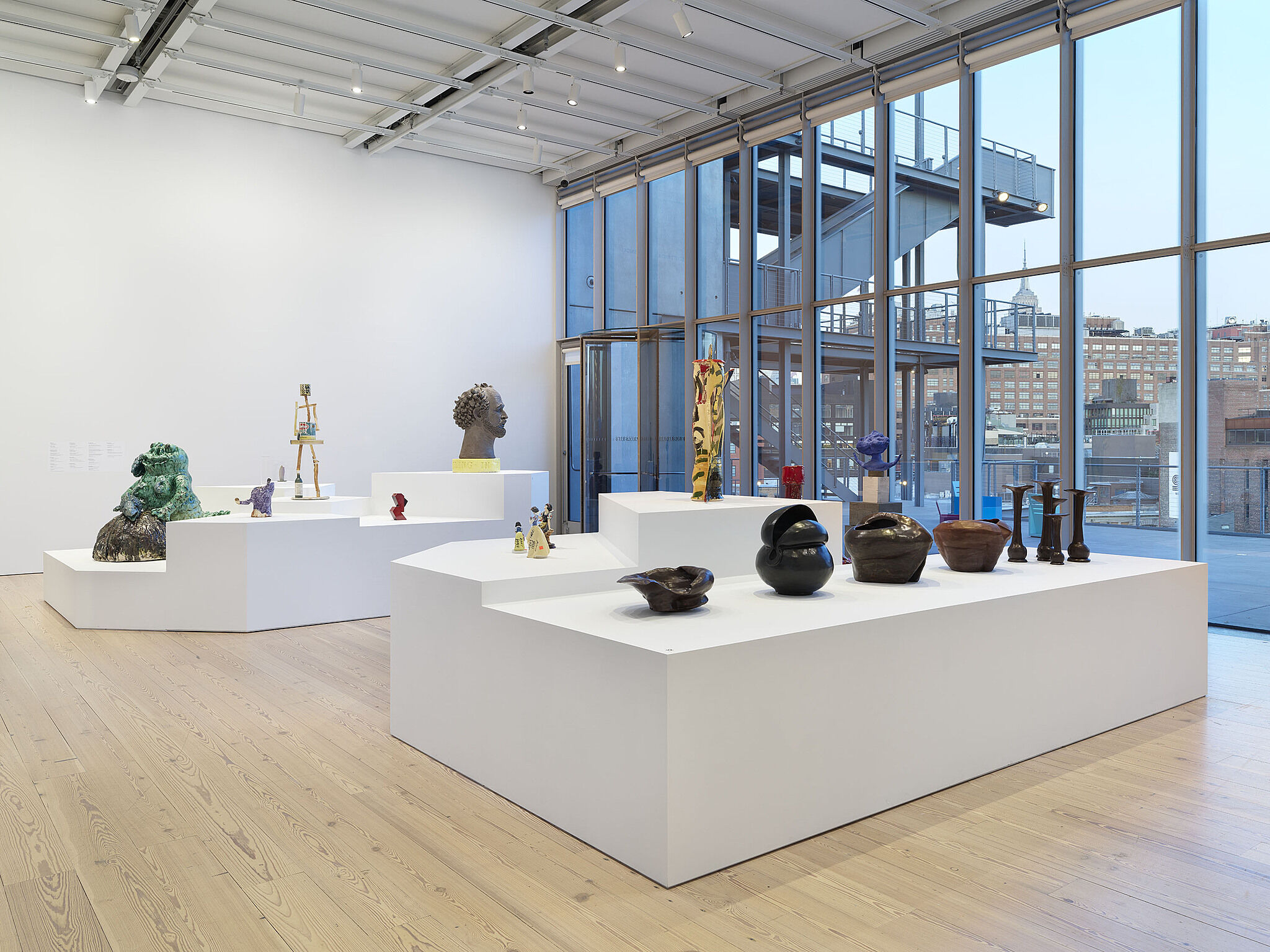

Installation view of Making Knowing: Craft in Art, 1950–2019 (Whitney Museum of American Art, New York, November 22, 2019–January 2021). From left to right: David James Gilhooly, Merfrog and Her Pet Fish, 1976; Arlene Shechet, Y Wabi N, 2007; Richard Shaw, Mike Goes Back to T., 1980; Kenneth Price, Nail Polish and Lipstick, 1980; Robert Arneson, Whistling in the Dark, 1976; Paul McCarthy, Walt Paul Store, WS, Snow White and Dopey, 2013; Paul McCarthy, Walt Paul Store, WS, Snow White, 2013; Paul McCarthy, Walt Paul Store, WS, Snow White, 2013; Katy Schimert, The Five Senses, 1997; Betty Woodman, Still Life Vase #11, 1990; Arlene Shechet, A Night Out, 2011. Photograph by Ron Amstutz
From the exhibition Making Knowing: Craft in Art, 1950–2019
-
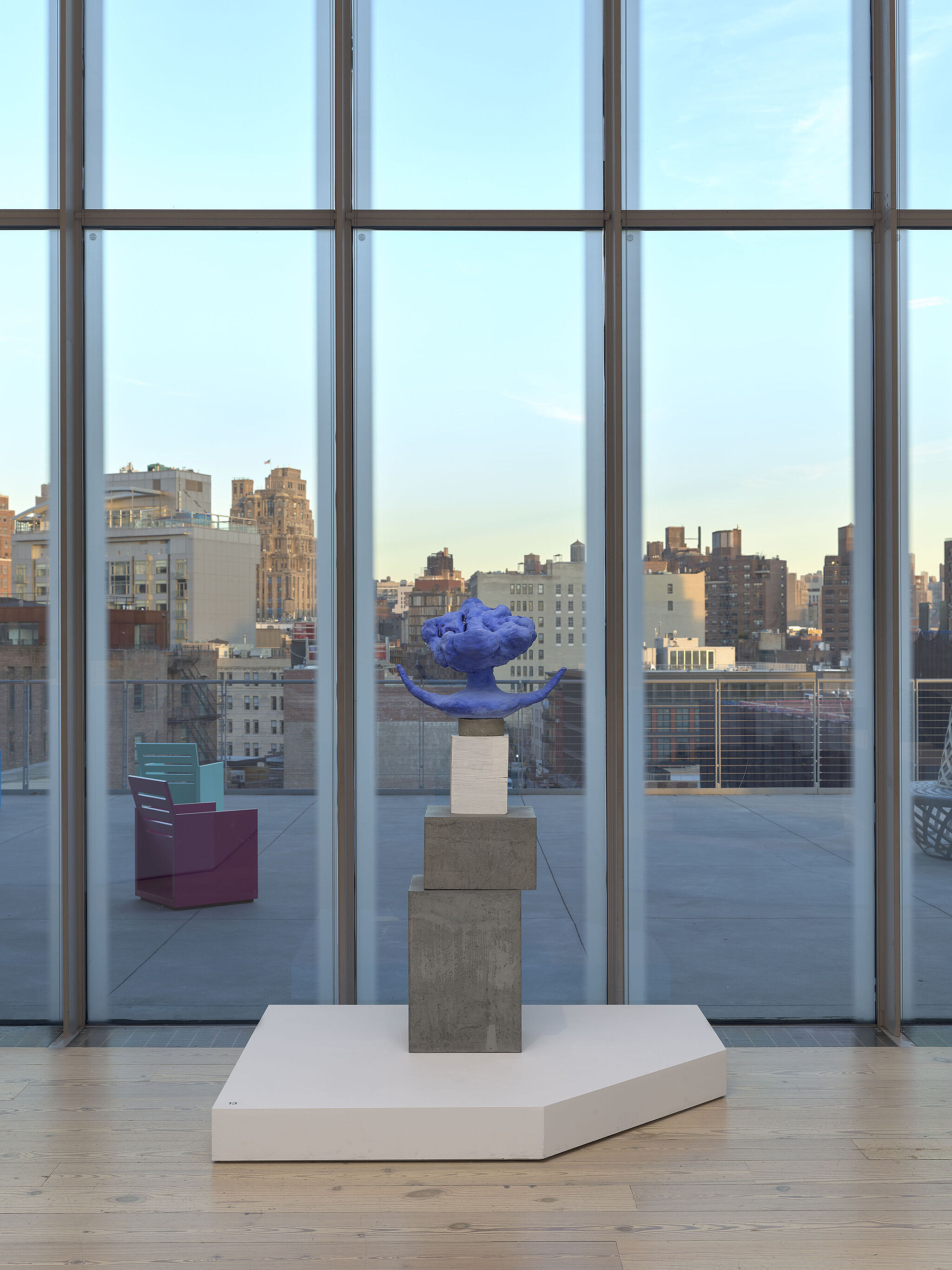

Installation view of Making Knowing: Craft in Art, 1950–2019 (Whitney Museum of American Art, New York, November 22, 2019–January 2021). From left to right: Mary Heilmann, Monochrome Chairs, 2015; Arlene Shechet, A Night Out, 2011. Photograph by Ron Amstutz
From the exhibition Making Knowing: Craft in Art, 1950–2019

